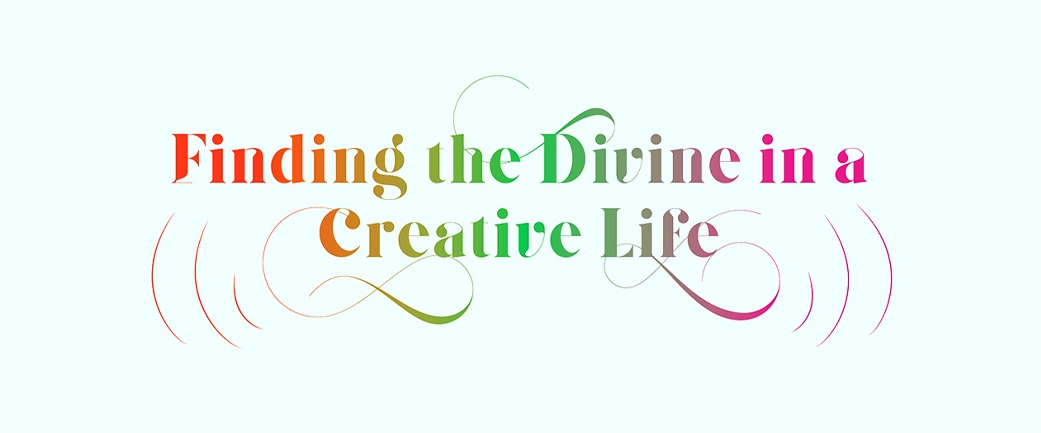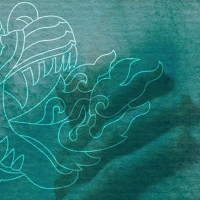
Allyson Grey’s secret writing and visionary art
Influenced by her experiences with psychedelics, Allyson Grey has created abstract visionary art for over forty years. In 1996, she co-founded CoSM, Chapel of Sacred Mirrors, an inter-spiritual church with her life partner, Alex Grey, as a space to contemplate and honor art as a spiritual path.
Teresa Tomassoni: How have mystical experiences influenced your work and helped you transcend what you thought was possible as a visionary artist?
Allyson Grey: In 1969, I began experimenting with psychedelics, primarily LSD. At that time, I saw myself as an agnostic Jew and art student activist, committed to ending the draft and Vietnam War, supporting civil rights and the women’s movement. In 1971, I read the book Be Here Now, wherein Ram Dass tells of his personal transformation after taking LSD by himself in silence in a dark room where he witnessed “the White Light.”
Taking his experience as an opening, I dosed LSD in a way I had not yet tried—lying quietly alone in my dark bedroom. In that journey, I saw Secret Writing wafting in ribbons through the air and hovering over all surfaces. This ineffable, untranslatable symbol system made of light was, to me, God’s communication, and I thought, “God is the word chosen to represent this undeniable connectedness with the holy.” Secret Writing transformed my life and my artwork, as did the elements of Chaos and Order in subsequent LSD journeys. An artist’s content and subject matter is their most important creative choice. To portray “the White Light” has always been the highest intention of my art. Later, Ram Dass became our teacher who greatly influenced our lives.
How has the act of making art become a healing spiritual practice for you?
Concentrating while making art, especially when the practice is labor intensive, can be a personal meditation to calm the soul. Meditation is the royal road that contributes to the mind’s focus and wellness. As a part of our spiritual life, Alex and I practice a seated meditation every morning and a painting meditation for several hours every evening before bed. Meditation practices such as walking, chanting, mantra, prayer, or making art with a spiritually focused intention all encourage us to experience consecutive moments of NOW.
How can art liberate us?
Buddhists teach a principle called liberation through seeing. Art can serve as a meditation tool. For example, someone may meditate on a mandala drawing or painting, which represents a centric image that evokes wholeness, totality, infinity, timelessness, and unity. Or they may meditate on a Tibetan Buddhist thangka painting of the deity Vajrabhairava, conqueror of the Lord of Death, to vanquish a fear of death or loss. In studying this painting, viewers may see the deity breathing in rainbow ribbons and exhaling grey smoke. They are encouraged to follow the lead of the pictorial representation as they breathe through their meditation with the intention of liberating the mind. Any object, and especially art created for this purpose, has this capacity to bring enlightenment to the practitioner. Buddha is said to have held up a lotus flower during a meditation that resulted in one inspired student experiencing spontaneous liberation.
How can one who does not necessarily identify as an artist cultivate a creative healing practice?
Everyone was once an artist, a dancer, a singer. That creativity is a healing force is well known to practitioners of art therapy. By taking a subjective thought and turning it into an objective “thing” outside of our mind, we can study and release a negative thought or positive intention. Those who have had trauma—and who hasn’t?—can feel that benefit and uplifting in every creative act.
How can art help us transcend limited notions of spirituality and even heal us from possible harm induced by inherited religious practices or beliefs?
Most of what we know of the world’s religions comes from art, including the written word. Our art can pictorialize or objectify a difficult past and be a healing force. Art can envision a positive future and can aid in vanquishing negative thoughts and emotions. It is a spiritual practice to let love infuse our creative life and let the past die behind us. To enhance the benefits of creativity, play spiritual music, listen to a spiritual teacher, pray or recite mantras while creating art. To infuse your art practice with spirit, allow focus and concentration to guide your creative time.

How do artists heal others by sharing their work? Is this an intention of your work?
Any act with the intention to benefit others offers healing. Embedded with positive intentions, art may plant a seed of liberation in the mindstream of the viewer.
How do you foster collective healing through art?
Because Alex and I characterize art as a spiritual practice, we hold Art Church on each new moon, a time of intention setting. In Art Church, CoSM members make art together in silence with a music playlist relevant or conducive to a chosen theme. An upcoming theme, for example, is Creating a Life You Love. After the meditation we show our results and share our experience of the art meditation. Places like the Rubin Museum or CoSM offer an environment conducive to meditation and healing through the observation of art.
About the Contributor
Allyson Grey is a conceptual artist, abstract painter, co-founder of CoSM, Chapel of Sacred Mirrors, and a long-time mentor and influencer of the contemporary visionary art movement. She has been the editor and co-author of countless articles and over a dozen books, including eleven volumes of CoSM Journal of Visionary Culture, co-founded with Alex Grey. Allyson has been a featured presenter at many conferences, including the Women’s Visionary Congress, Horizons Conference, and World Psychedelic Forum.
Teresa Tomassoni is a journalist reporting on social and environmental issues, particularly as they pertain to indigenous peoples. She has lived, studied, and reported in Latin America, Asia, and Australia, and holds degrees in journalism from the CUNY Graduate School of Journalism and international health and social work from LIU Global, a program of Long Island University.
Image Credit
Allyson Grey (b. 1952, Baltimore, MD); Complimentary Mandala; 2016; 24 x 24 in. (60.9 x 60.9 cm); oil on wood panel; © Allyson Grey, 2022






Interested in mandala making